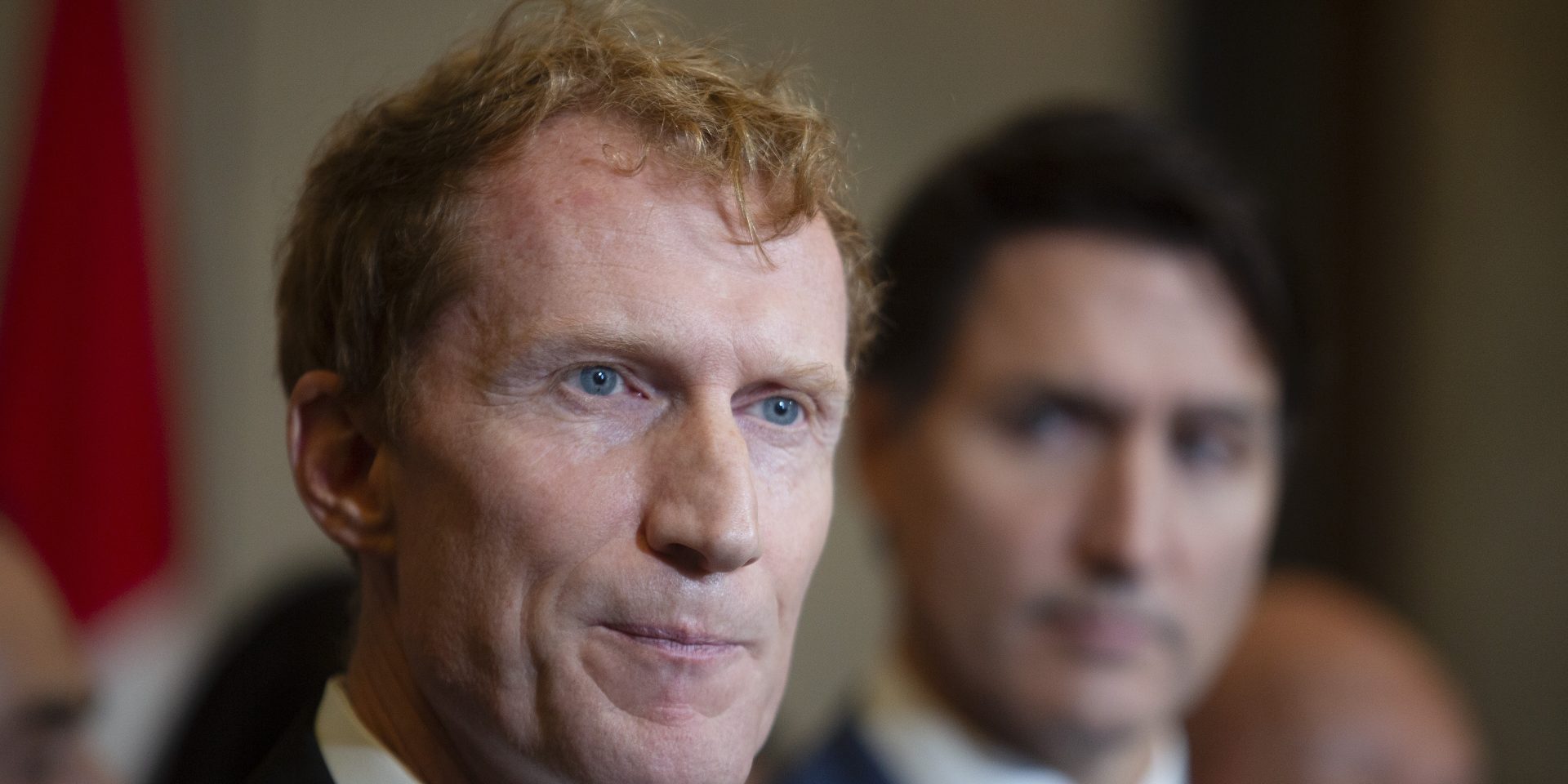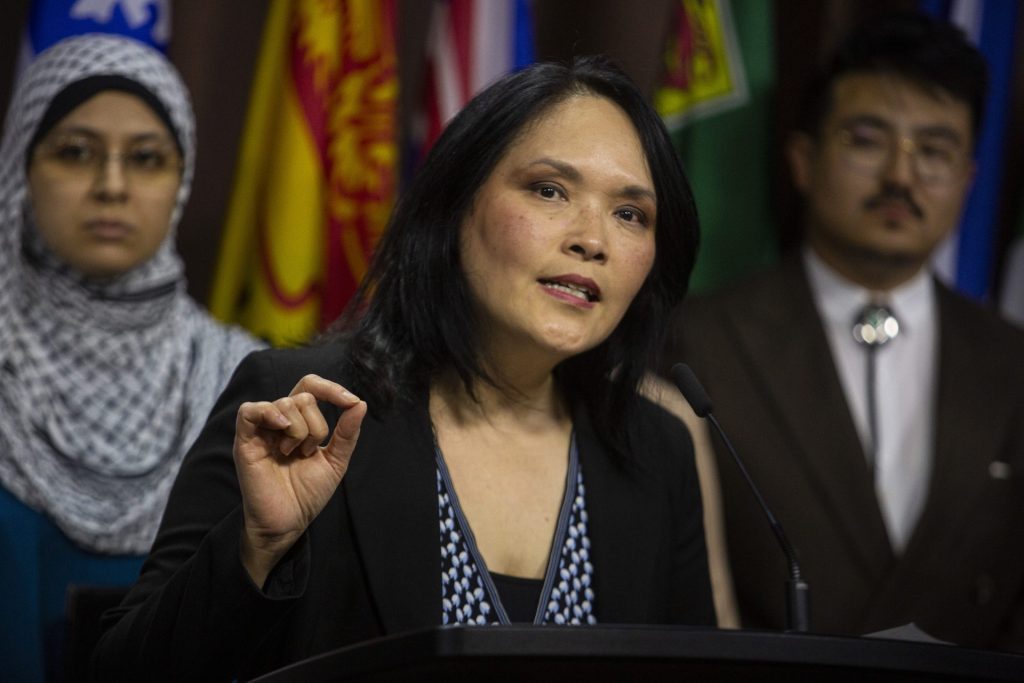Canada’s ‘short-sighted’ immigration cuts will hurt the economy, say critics

The Liberal government’s “short-sighted” major shift in immigration policies—marked by cuts to international student admissions, temporary worker restrictions, and tighter pathways to permanent residency—will create “deep economic ripple effects,” hurt small businesses, and disrupt families across Canada, says the NDP’s immigration critic.
A Jan. 23 projection released by the Office of the Parliamentary Budget Officer (PBO) says the federal government’s 2025–2027 immigration plans announced last October might be successful in slowing the population growth, but it will hurt the economy in the long term.
According to the PBO, the new limitations in immigration will decrease the population by 1.4-million by 2027, leaving the country with less young immigrants against an aging population and shrink Canada’s economy by an average of $37-billion over the next three years due to reduction in production and signals a slowdown in economic activity. According to the PBO, bringing in less temporary workers would also mean for Canada to lose 1.3-billion hours of work in 2027.

“Absolutely, it’s going to hurt the Canadian economy,” NDP MP Jenny Kwan (Vancouver East, B.C.) told The Hill Times, pointing to business communities struggling to fill critical gaps in labour shortage and academic institutions that are cutting programs and resources. Kwan added that she is not surprised by the PBO’s projections.
Kwan accused the Liberals of not having conducted any financial or impact analysis before implementing the changes.
“It really was a political calculus by the Liberals to scapegoat newcomers for their failures in their policies. Just a cheap trick that they’re using to try and fool Canadians for their failures,” Kwan said.
Kwan who sat on the House Citizenship and Immigration Committee prior to the prorogation of Parliament, added that she had requested the government to table any relevant documents that would outline the impact of immigration policies in committee. Those documents won’t be forthcoming with the parliamentary suspension, she explained. Conservative and Bloc Québécois’ immigration critics did not respond to The Hill Times questions by publication deadline.
According to a 2019 RBC report, immigrants earn less on average than Canadian-born workers, and the growing wage gap between immigrants and Canadian-born workers is costing the country $50-billion each year, meaning bringing immigrants up to the same wage and employment levels with Canadian-born workers has the potential to add those billions to the GDP.
“The government seems to be emphasizing sustainability over rapid growth,” said Shiva S. Mohan, a research fellow at Toronto Metropolitan University and Canada Excellence Research Chair in Migration and Integration.

Mohan argued that stricter eligibility rules, caps on certain immigration streams, and potential processing delays with more than 3,000 jobs to be cut from Immigration, Refugees, and Citizenship Canada, may make the country less attractive to skilled workers when competing countries offer more accessible pathways.
“This could worsen existing labour shortages in key sectors like health care, caregiving, and hospitality, stalling economic growth, reducing productivity, and limiting innovation in key industries,” Mohan said.
Mohan suggested that the government’s strategy can help mitigate voter dissatisfaction and appeal to centrist and swing voters. However, Mohan argued this could also “alienate immigrant communities and businesses that depend on foreign talent to address critical labour shortages, particularly in sectors like caregiving and hospitality.”
Sharry Aiken, an immigration law professor at Queen’s University, described the government’s move to reduce the number of temporary residents as “knee-jerk reactions to real challenges, but not the right responses,” and argued it will be viewed by many as “a desperate attempt [by the Liberal government] to save their skin.”
Aiken said the broader challenges Canada faces—including the housing crisis, strains on the higher education system, and social services—which have been part of the government’s reasoning to limit the intake, are not caused by immigration, but rather stem from the government’s failure to plan and manage resources to accommodate population growth.
Aiken underlined that there was a real need for “fine tuning” some immigration programs to address abuses in the system and issues around enforcement, but said the government has chosen to “take a hatchet” to some programs with the recent changes.
International student applications for post-secondary education have dropped by 23 per cent In Ontario this year after the federal government reduced the number of study permits.
Elliot Tepper, a Carleton University political science professor, stressed that “when we get caught up so much in our internal politics, it helps to raise our heads to remember what the bigger picture is.”
Tepper said that the fallout for the universities and colleges is “unfair,” and that the changes are increasing financial pressure on the schools as they rely on the higher tuition fees paid by international students due to inadequate funding by the provinces.
“It’s a direct cost to the country in the long run, to have this kind of crisis imposed upon higher education and students themselves,” Tepper said.
Pathways to permanent residency narrowing with smaller intake, stringent criteria
Since last fall, the federal government has introduced measures aligned with its 2025–27 Immigration Levels Plan, aiming to slow population growth and reduce permanent and temporary resident admissions.
The latest restrictions, which took effect on Jan. 21, introduce additional eligibility criteria for family members of temporary residents with work permits in Canada. These criteria limit eligibility to those enrolled in a doctoral program, a master’s program lasting 16 months or longer, or specific professional and eligible programs such as nursing, pharmacy, and engineering. Another measure imposes by spring 2025, skilled workers will no longer get extra points for having a job offer when applying for permanent residency.
Provinces have criticized Ottawa for cutting down economic immigration allocations under the Provincial Nominee Program (PNP) by 50 per cent for 2025, since it’s a program many rely on heavily to address workforce needs. They argue the reductions undermine their ability to meet local employer demands and support economic growth.
The 2025–2027 Immigration Levels Plan is expected to lead to a population decline of 0.2 per cent in both 2025 and 2026, before returning to 0.8 per cent growth in 2027. The targets have been reduced around 20 per cent from last year’s projections, with permanent resident admissions set at 395,000 in 2025, 380,000 in 2026, and 365,000 in 2027. The plan also aims to reduce temporary resident volumes to five per cent of Canada’s population by 2026, resulting in a projected drop of 445,901 temporary residents in 2025, 445,662 in 2026, and a modest increase of 17,439 in 2027.
Conservatives can make further reductions to intake: Andrew Griffith
Observers stress that balancing public concerns with economic and demographic realities will remain as a central issue in Canadian immigration policy.
Andrew Griffith, a former director general at IRCC, noted that the changes mark a “significant rollback of previous expansion and facilitation of immigration—both permanent and temporary—driven by a belated realization by the government of the impact on housing, health, and infrastructure of excessively high levels, and consequently, reduced support."
This rollback allows for "a more informed and nuanced discussion" of immigration issues, Griffith said.
Griffith argued that the Liberals “can no longer portray public and political concerns as inherently racist or xenophobic,” and that debate is shifting towards how immigration can benefit all Canadians. Some of this will play a part in broader electoral strategies, he added.
When it comes to measuring the impacts, Griffith said it will be up to the next government and predicted that "the Conservatives may make further reductions."
While the future leadership of the Liberal Party and its direction on immigration policies remain uncertain, polls show that the Conservative Party led by Pierre Poilievre (Carleton, Ont.)—who has signalled his desire for reduced immigration targets as a way to reduce the housing and affordability crisis—is well ahead of the Liberals with the most recent polls.
“A party like the Conservatives might push for even stricter policies, aligning with global trends of rising populism, and more controlled migration systems,” echoed Mohan, but warned “such moves could lead Canada to fall behind in the global competition for skilled labour, especially as countries like Australia and Germany introduce innovative strategies to attract migrants despite similar challenges.”
ikoca@hilltimes.com
The Hill Times






 LICENSING
LICENSING PODCAST
PODCAST ALERTS
ALERTS













